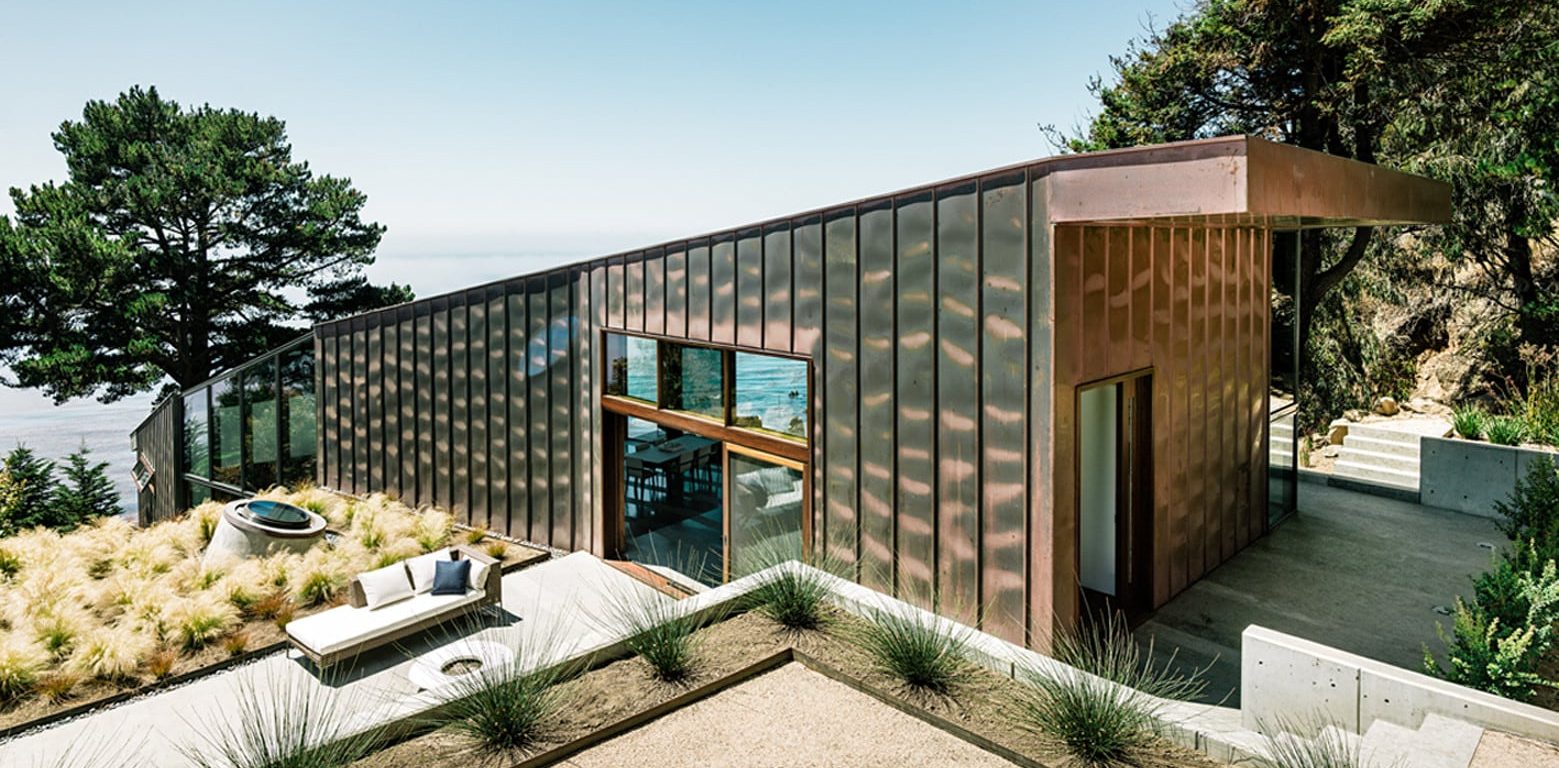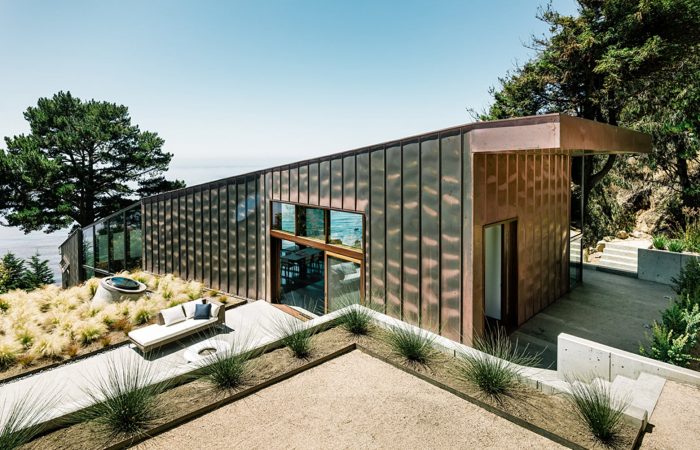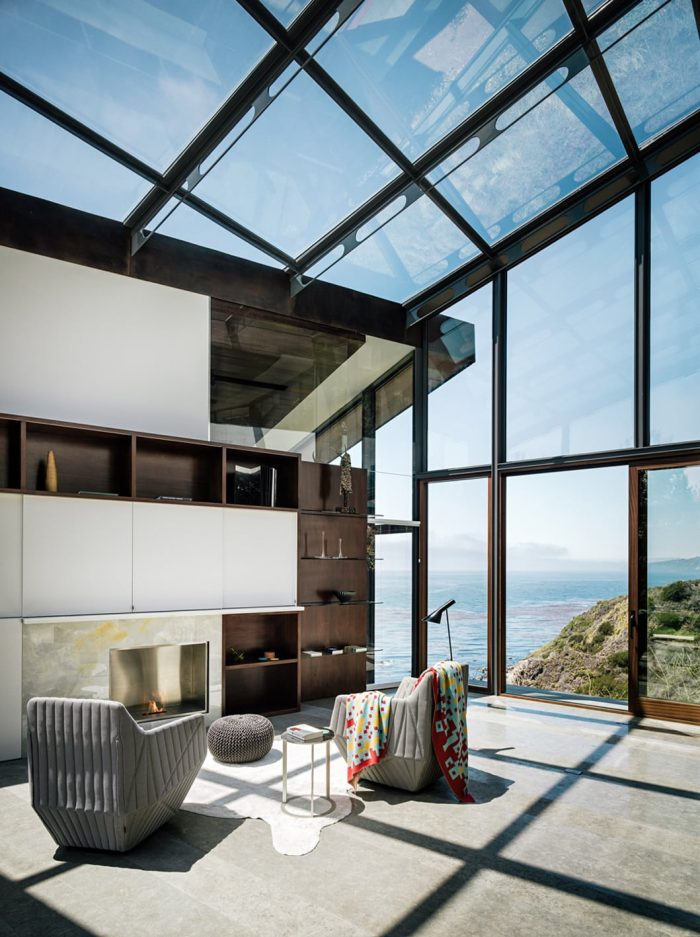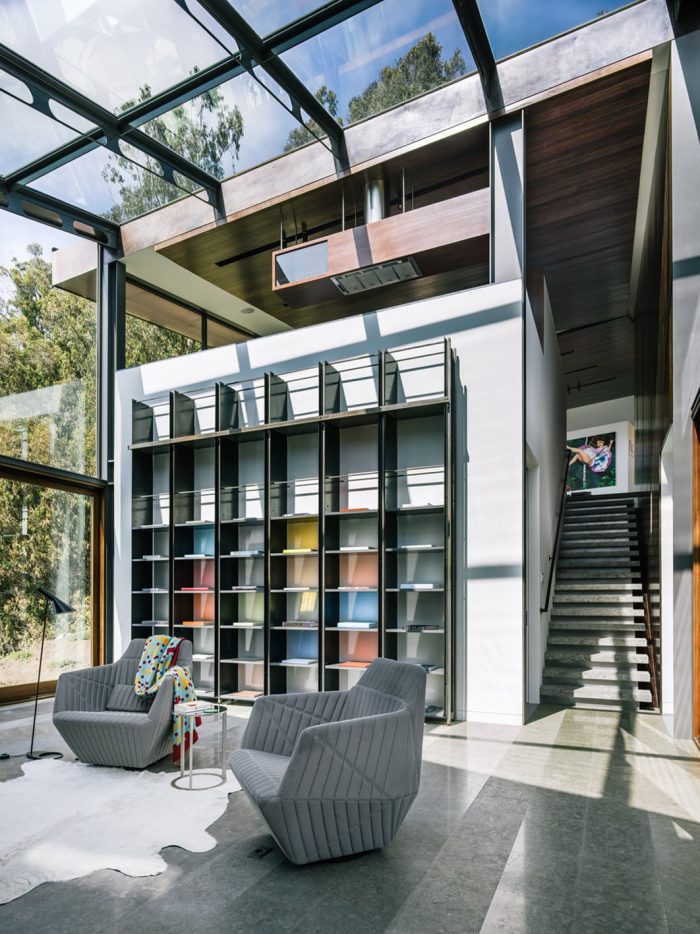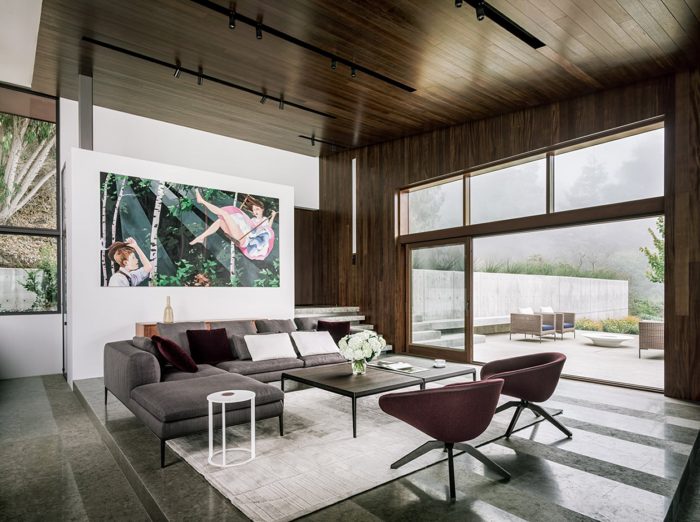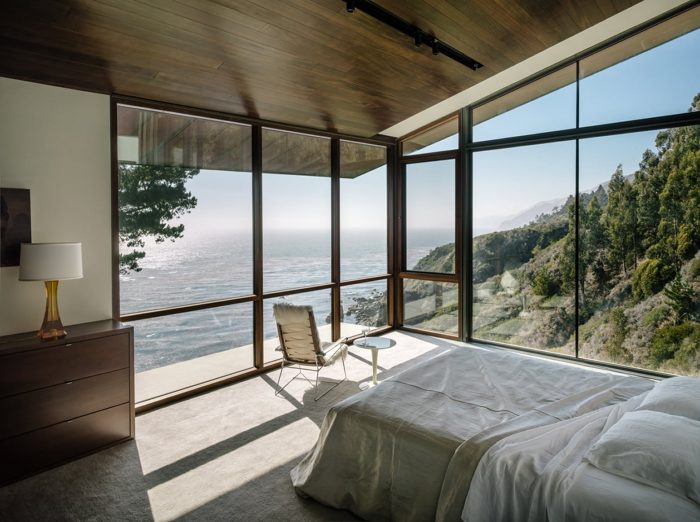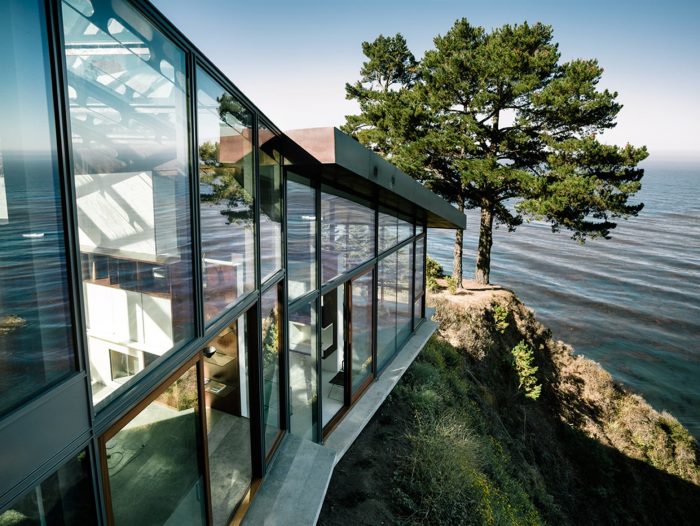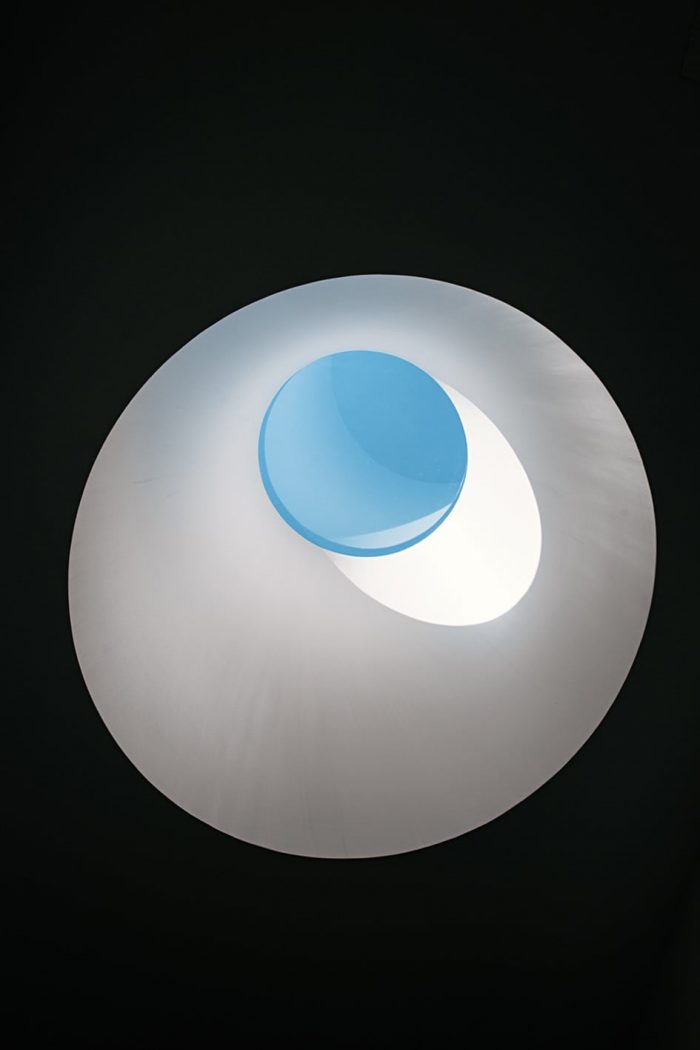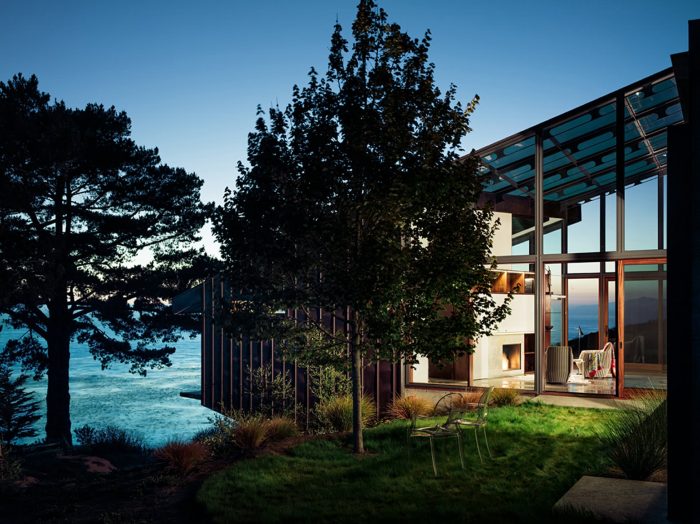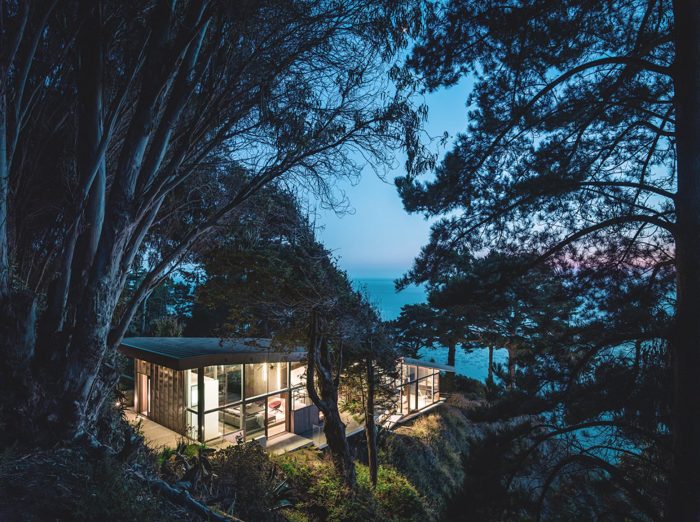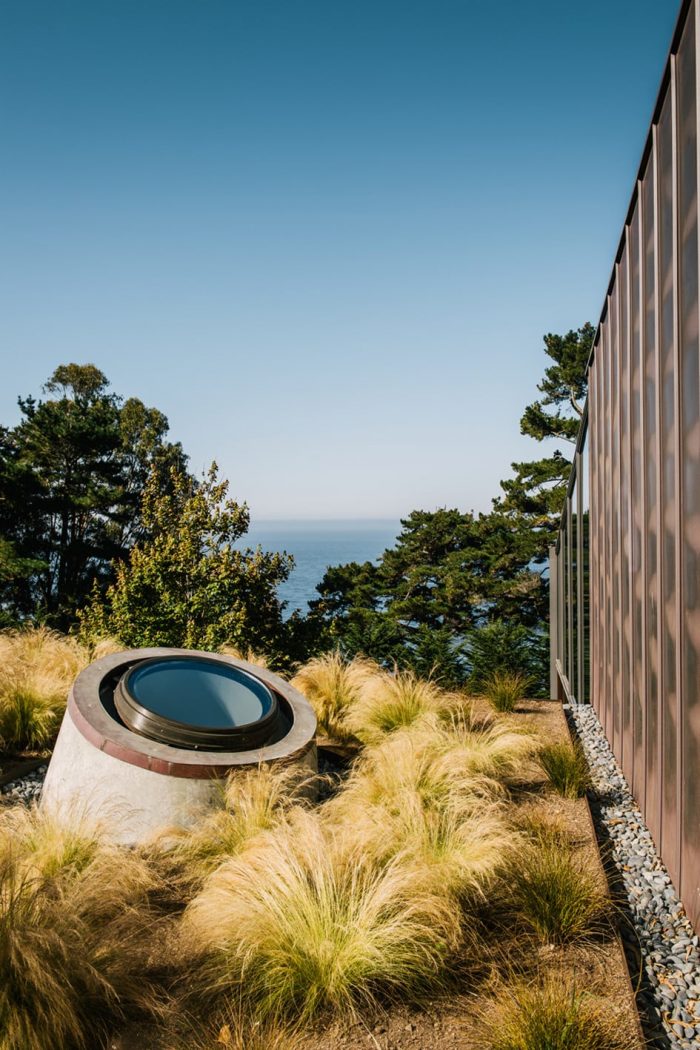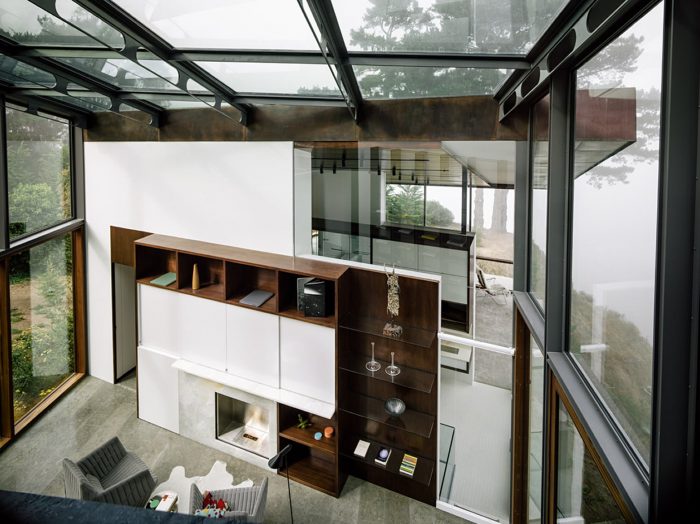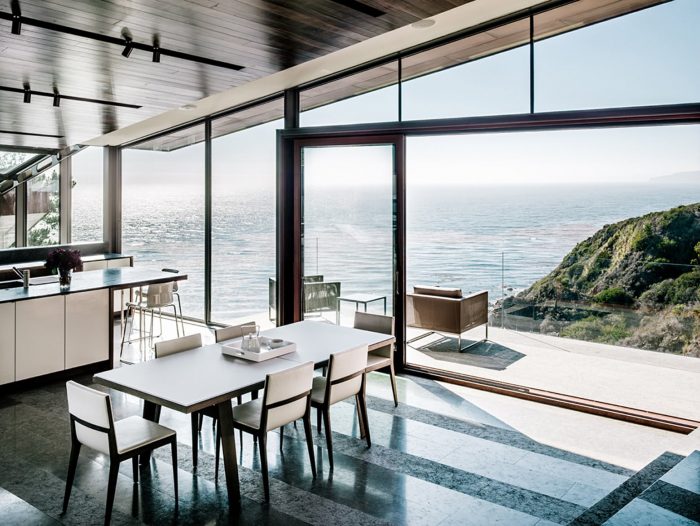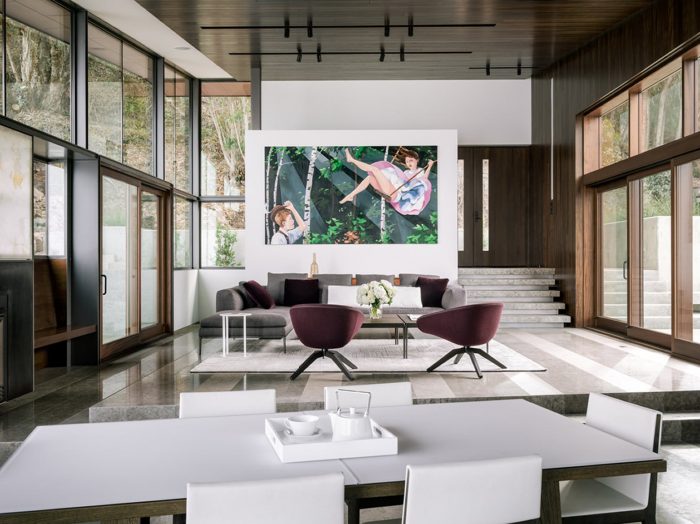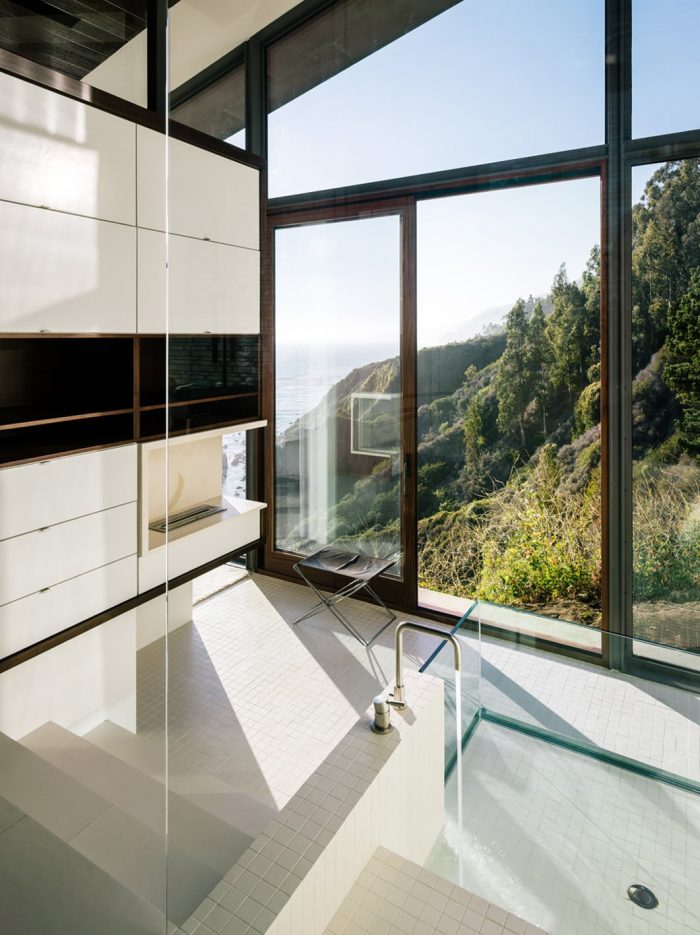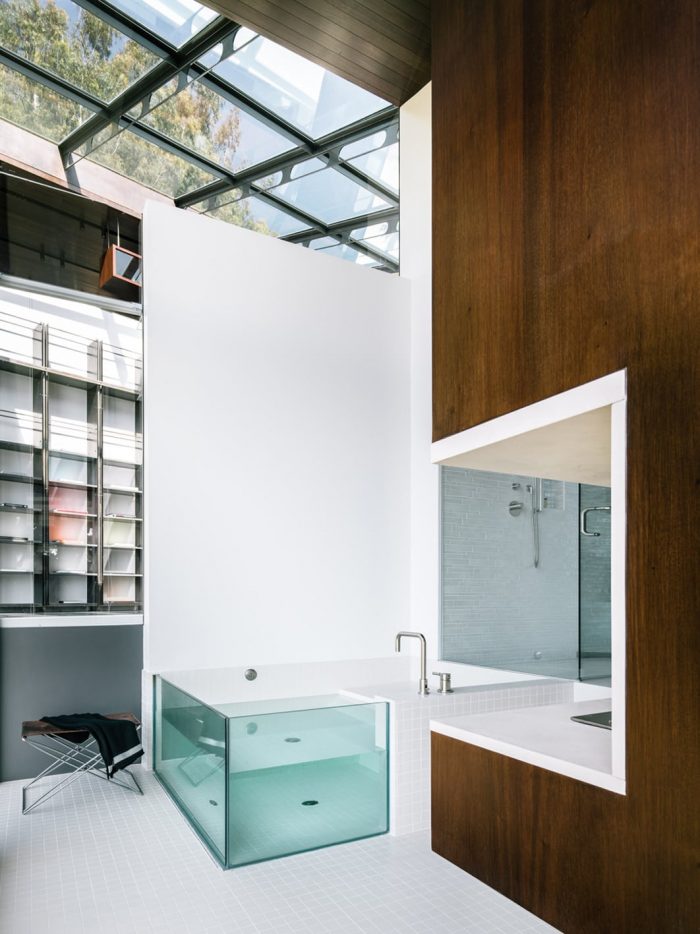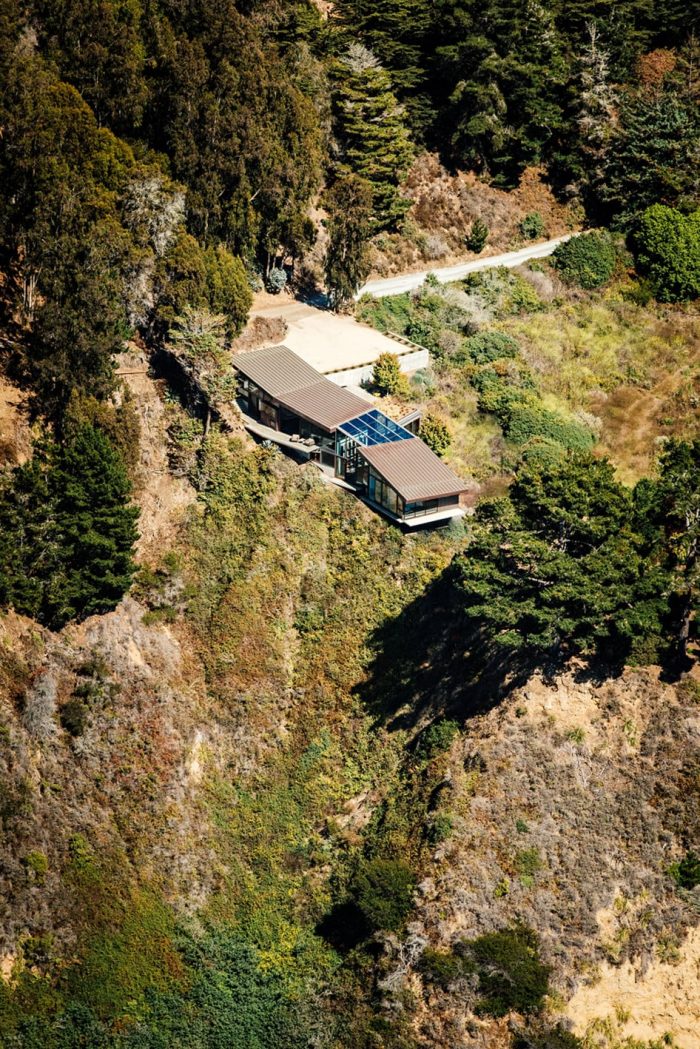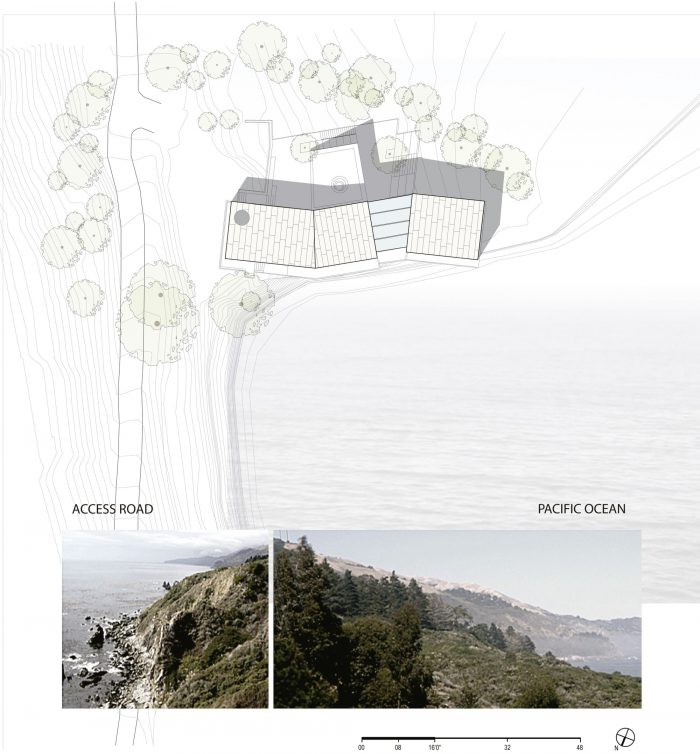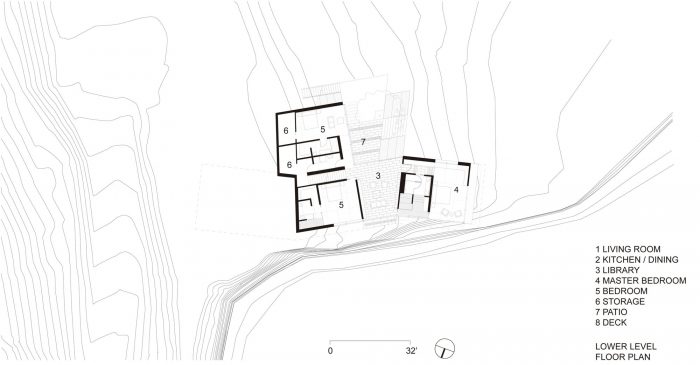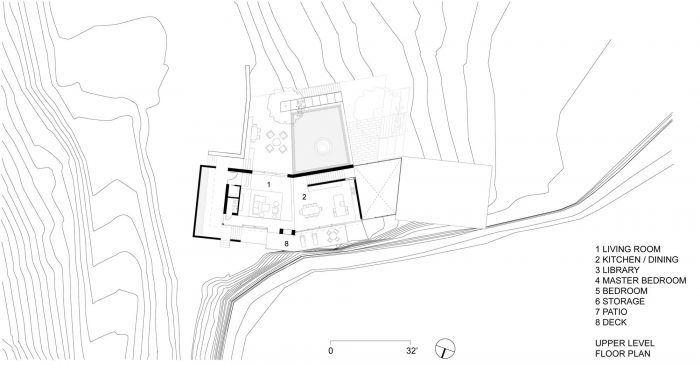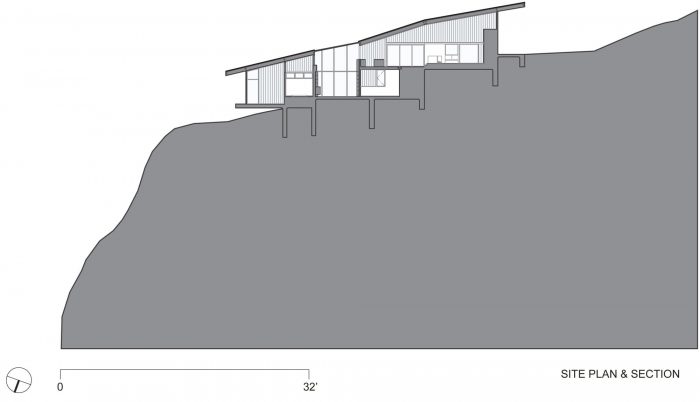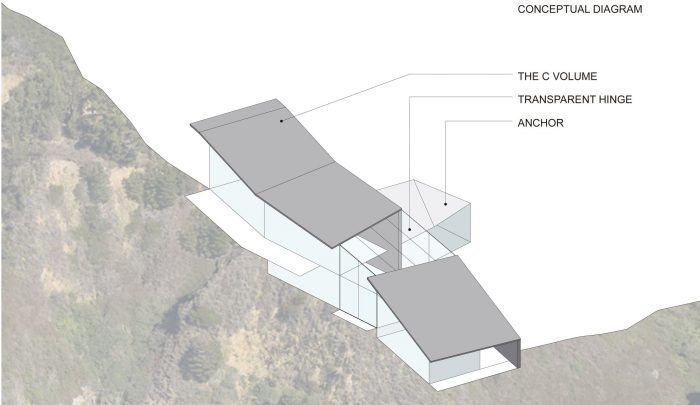这个三居室的住宅,位于大苏尔壮观的南海岸,被固定在这个加州景观的自然美景和力量中。我们的设计策略是将建筑嵌入到土地中,创造一个与环境密不可分的结构。该地块提供了戏剧性的景观:沿着悬崖和西面都有250英尺的落差通往太平洋。然而,它需要一个比巨大的图片窗更复杂的形式。
This three-bedroom home, on Big Sur’s spectacular south coast, is anchored in the natural beauty and power of this California landscape. Our design strategy embeds the building within the land, creating a structure inseparable from its context. The site offers dramatic views: a 250-foot drop to the Pacific Ocean both along the bluff and the western exposure. Yet it demands a form more complex than a giant picture window.
长而薄的体量根据土地的自然轮廓和悬崖的几何形状进行调整和变形,就像该地区海滨森林中的香蕉蛞蝓。通过这种方式,复杂的结构系统适用并违背了自然形式,以适应选址。房子从悬崖上悬空12英尺,既是为了保护悬崖上脆弱的生态系统,也是为了确保结构的完整性和安全性。室内是一个避难所,与海洋和悬崖的粗糙和巨大的规模形成对比。房子还为南部的户外空间遮挡了从西北方向吹来的强风。
The long, thin volume conforms and deforms to the natural contours of the land and the geometries of the bluff, much like the banana slug native to the region’s seaside forests. In this way, the complex structural system applies and defies natural forms to accommodate the siting. The house is cantilevered 12 feet back from the bluff, both to protect the cliff’s delicate ecosystem and to ensure the structure’s integrity and safety. The interior is a shelter, a refuge in contrast with the roughness and immense scale of the ocean and cliff. The house also shields the southern outdoor spaces from the powerful winds that blow from the northwest.
房子的主体由两个长方形盒子组成,由一个全玻璃的图书馆/书房连接。主入口位于上部体量的顶部,生活空间从最公共的地方向最私人的地方展开。客厅、厨房和餐厅是一个开放的计划,在水平和屋顶平面上有微妙的变化,以区分各种功能。较低的体量,一个双悬臂式的主卧室套房,作为一个海角,在海洋之上,从其落地窗提供令人窒息的景色。这两个体量之间的联系是玻璃图书馆/书房;它是房子的炉灶,一个以其几何形状和透明度将房子内外结合起来的房间。
The main body of the house is composed of two rectangular boxes connected by an all-glass library/den.The main entry is located at the top of the upper volume with the living spaces unfolding from the most public to the most private. The living room kitchen and dining room are an open plan with subtle changes in levels and roof planes to differentiate the various functions. The lower volume, a double-cantilevered master bedroom suite, acts as a promontory above the ocean, offering breath-taking views from its floor-to-ceiling windows. The link between these two volumes is the glass library/den; it is the hearth of the house, a room that unites the house inside and out both with its geometry and its transparency.
与房子垂直的一层混凝土侧翼包括一个底层卧室、建筑服务和一个绿色屋顶;它是将房子锁定在土地上的巨石。
房子有两个主要的外墙,南面的外墙是用铜包起来的,包裹着墙壁和屋顶。铜包覆的屋顶悬垂保护窗户和前门不受阳光和海风的影响。北面的立面是全玻璃的;透明的大面积玻璃将房子的视野打开。
A one-story concrete wing perpendicular to the house includes a ground-floor bedroom, building services and a green roof; it is the boulder locking the house to the land.
The house has two main facades, the south one is clad in copper which wraps up the wall and over on the roof. Copper clad roof overhangs protect windows and the front door from the sun and the wind of the ocean.The façade to the north is made all glass; clear expanses of glass open the house to the view.
可持续设计策略
– 包括浴室在内的所有房间的自然采光都是根据太阳方向量身定做的,减少了人工照明的电力负荷。主要的日光是间接的,来自北方,而南方的光线是有限的,并通过自动遮阳系统加以缓解。
– 低辐射、阳光控制的玻璃是绝缘的,并镶嵌在一个断热的定制钢架上。这种高性能的玻璃减少了太阳辐射,提高了冬季的舒适度,并在不影响景观的情况下提供了卓越的热性能。
Sustainable Design Strategies
– Natural daylight in all rooms including bathrooms is tailored to solar orientation and reduces power loads from artificial lighting. Primary daylight is indirect and comes from the north while southern light limited and mitigated by automatic shading system
– Low E, solar control glazing is insulated and set into a thermally broken custom steel frame. This high performance glazing reduces solar gain, improves winter comfort, and offers superior thermal performance without sacrificing views.
– 辐射式水力加热消除了管道系统,允许更低的操作温度和更高的居住舒适度。与传统的强制空气系统相比,能源使用量大大降低,效率更高。
– 建筑布局自然地促进了叠层通风。从较低的主卧室套房到较高的入口处,开放的平面图在多个层面上相连。最低层的自动控制的可操作玻璃与最高层的排气传输格栅相协调。压力和高度差允许热空气的排出和凉爽新鲜空气的吸入。
– Radiant hydronic heat eliminates ductwork and allows lower operating temperatures and higher occupant comfort levels. Energy usage is significantly lower and more efficient than traditional forced air systems.
– Stack ventilation is naturally facilitated by the building layout. The open floor plan is connected on multiple levels from the lower master bedroom suite to the entry at a higher elevation. Automatically controlled operable glazing at the lowest level is coordinated with an exhaust transfer grille at the highest elevation. The pressure and height differential allows the exhaustion of hot air and intake of cool fresh air.
– 抗旱和本地植被是专门为了减少土壤侵蚀和促进当地野生动物的新栖息地。植被屋顶减少了建筑的空中视觉足迹,并为下面的居住空间提供了额外的热质/隔热。
– 通过化粪池系统的现场废水处理和高效的管道装置,减少了城市下水道系统的负荷,并区分了黑水和灰水。相反,淡水来自于现场的河流,也不依赖市政系统。
– Drought resistant and native vegetation is specifically intended reduce soil erosion and facilitates new habitats for local wildlife. A vegetated roof reduces the aerial visual footprint of the building and provides added thermal mass / insulation for the occupied space below.
– On-site wastewater treatment through a septic system paired with efficient plumbing fixtures reduces loads to municipal sewer systems and differentiates black and grey water. Conversely, fresh water is garnered from an on-site stream that is also not dependent on municipal systems.
– 低挥发性有机化合物和可持续的饰面是主要的考虑因素,以确保最高的室内空气质量和对饰面材料的负责任使用。室内涂料和其他室内饰面都是低VOC的。墙壁和天花板的绝缘材料是不含甲醛的牛仔布。
– Low VOC & sustainable finishes were primary considerations to ensure the highest interior air quality and responsible use of finish materials. The interior paint and other interior finishes are all low VOC. Wall and ceiling insulation is formaldehyde free denim
Architects: Fougeron Architecture
Area : 3800 ft²
Year : 2014
Photographs :Joe Fletcher Photography
Geotechnical Engineer : Grice Engineering and Geology
Landscape Architects : Blasen Landscape Architecture
Structural Engineering : Endrestudio
Civil Engineer : Grice Engineering and Geology
Civil/Geotechnical Engineering : Grice Engineering and Geology
City : Big Sur
Country : United States

